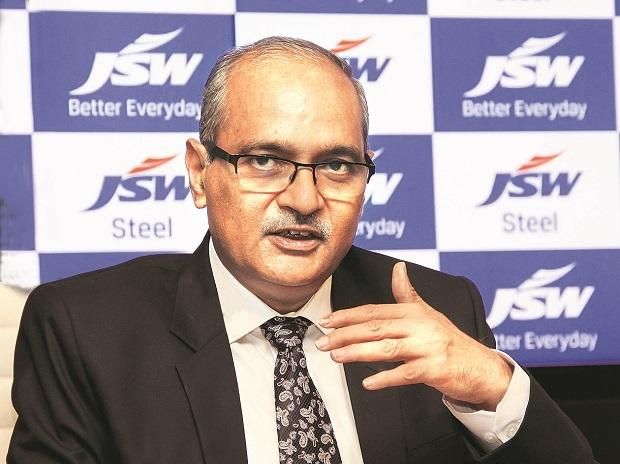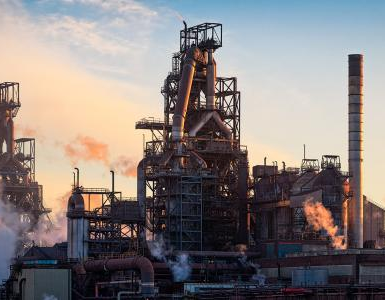JSW Steel – Seshagiri Rao on going green, carbon financing & hydrogen fuel cells.
Recently Mr Jindal speaking at an event, laid out the challenges that the steel industry would face to go green along while commiting to go green. Let me start with the commitment bit first.
As far as the steel industry is concerned, coke is used as a reductant and also as a fuel for producing steel. So to replace coke with alternative energy is very difficult. That is why it is considered as a “hard to abate” sector. But at the same time, the kind of initiatives the steel sector is taking globally to reduce carbon emissions and to produce green steel are very large initiatives.
As far as JSW Steel is concerned, in line with the commitments made by India on reducing carbon emissions intensity to GDP by 33 to 35% by 2030, we also have worked out the numbers accordingly. Our commitment is to reduce carbon emissions for JSW Steel by 42%. So, because of a very comprehensive sustainability policy on not just reducing carbon emission, but also waste utilisation, waste generation and water usage, air pollution and biodiversity, we have prepared a very comprehensive sustainability policy on not just reducing carbon emission, but also waste utilisation, waste generation and water usage, air pollution and biodiversity, we have prepared a very comprehensive sustainability policy.
🔥 What about we co-host a webinar? Let's educate, captivate, and convert the hydrogen economy!
Hydrogen Central is the global go-to online magazine for the hydrogen economy, we can help you host impactful webinars that become a global reference on your topic and are an evergreen source of leads. Click here to request more details
We have communicated to all the investors, shareholders and stakeholders where we would like to be by 2030 in each of these parameters when compared with nationally determined contributions by India or whatever paper that has been given by the ministry of steel to the ministry of environment, Indian steel industry has to reduce carbon emissions by 1% every year. Starting from 2005, the Indian international agency has made a sustainability development scenario where carbon emissions by the steel industry in India should be 2.18 T/tcs by 2030.
In all these parameters, we are far ahead of the very ambitious targets JSW Steel has taken. So we have communicated that we will achieve 1.95 T/tcs carbon emission for every tonne of steel which we are producing by 2030. To achieve that 1.95 T/tcs, we have taken a series of steps on what we should do each year starting from 2020 onwards. Thereby, we will be able to not only achieve or even exceed the target which we have set for 2030. There is a lot of capital expenditure which we have been incurring to achieve this.
We are ending 2021. You have eight years to hit the goal. So if you were to break it down in percentage terms, what would be the reduction in carbon emissions?
We were at 2.52 T/tcs as of March 31 (FY2021) carbon emission per tonne of steel which we were producing, which we have set a target to reduce to 1.95 by 2030. That means we are reducing by 57 bps, which is 23% over a period of nine years.
We are reducing carbon emission by approximately 2.5% every year whereas the ministry of steel’s commitment is to reduce by 1% every year. We are very aggressive and ambitious in reducing carbon emissions.
How much will it cost? What is the capital expenditure set aside for this? Is it viable to go green?
The issue is 27% of the total steel capacity in the world have committed to net zero emission by 2050. That is a commitment several companies have made but many of these companies are in developed countries and not in developing country like India.
The issue here remains that 10% of the population who are living in the developed world starting from 1990 to 2015, have emitted 50% of the carbon emissions in the world whereas the rest of the world is still struggling.
The 50% of the poorest population in the world contributed only 7% of the carbon emissions during this period. Therefore if a developing economy like India has to transition to a cleaner world, then a huge amount of capital expenditure and operating expenditure will be incurred.
Just to give an idea, today carbon which is traded in Europe is almost close to $70 for every tonne of carbon if you want to buy the certificates. That means if the steel industry is emitting approximately two tonnes of carbon, the shadow cost that is involved is $140 to $150 per tonne of carbon emitted per tonne of steel. It is very difficult for any company to incur that kind of operating or capital expenditure.
So carbon financing is required for a company located in a developing economy like India, which has to be given as a grant or at a concessional rate. Hand holding is required by developed countries to developing economies like India so that the government is able to extend this type of carbon financing to companies like us so that we are able to transition much faster than what the world is looking forward to.
So what is the plan as of today? While all the carbon financing gets sorted, what sort of capital expenditure will you be putting in?
As far as we are concerned, we are incurring close to Rs 10,000 crore in carbon transition. For instance, in the case of Odisha, where we have iron ore mines, we are setting up beneficiation plants and slurry pipelines to improve the quality of the ore that is used in the furnace. For instance, if the quality of the inputs which goes into the furnace are bad or inferior, then one has to consume more fuel.
When one consumes more fuel and there is more emissions, we are focusing on improving the quality of input that goes into the furnace so that it consumes less fuel and less carbon emission. So, spending is close to almost Rs 3450 crore in setting up beneficiation plants, slurry pipelines and also our own equipment for mining plus digitisation expenditure which we are incurring in terms of improving the quality of the inputs.
Over and above that we are also trying to replace fossil fuel-based power with the solar power and are now spending close to Rs 2,500 crore. One of our group companies set up a 1000 MW solar power plant in Karnataka and also in Maharashtra and in Tamil Nadu, which can replace fossil fuel power. That will help reduce carbon emission.
The third way which we are trying to do as a measure to reduce carbon emission is increasing the use of scrap in overall steel making. Today it is around 6-7%. We want it to increase by another 10% and that will reduce carbon emissions. We have taken a series of measures where capital expenditure is involved, but overall cost reduction will also happen. There is UCL capital expenditure which we need to commit to achieve this goal.
So is the outlook that eventually this capital expenditure will be worth it? Will going green make good business sense?
It will definitely make good business sense. For instance, when we wanted to achieve 1.95 carbon emissions, then we have done a sustainability linked bond in global markets. It is almost close to $500 million. It has given a very good response and we have got very good interest rates in securing the financing.
Financing is available in the global markets but that is at an interest rate which we need to pay. So there is a cost involved in doing that. That’s why I am saying whether there is any possibility of the developed countries extending their helping hand to a developing country like India via grants or concessional financing to help the transition. Thanks for staying up to date with Hydrogen Central.
Read the rest of the interview, click here.
READ the latest news shaping the hydrogen market at Hydrogen Central








